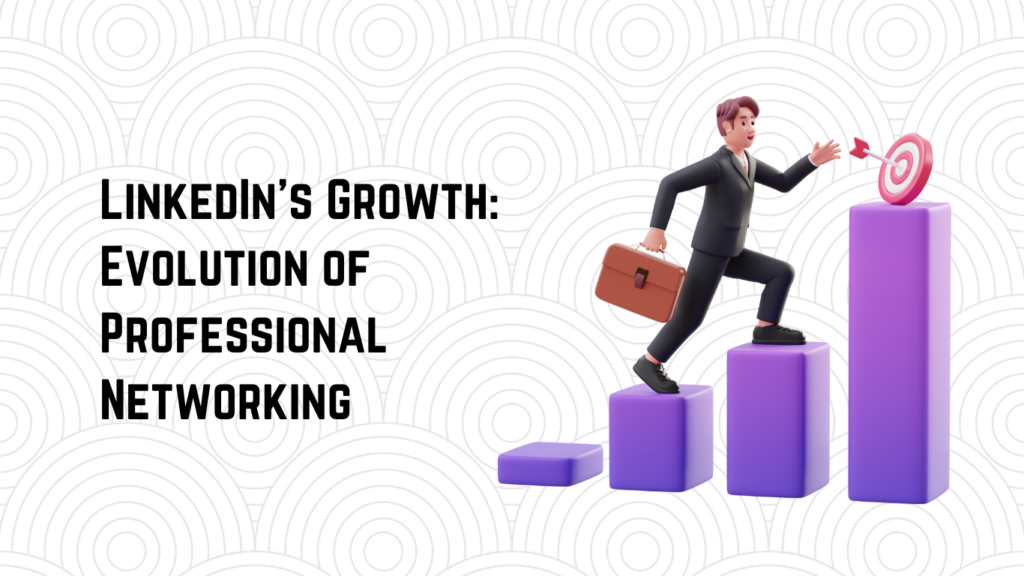
In the realm of professional networking, LinkedIn stands as a titan, transforming the way professionals connect, share, and grow their careers. Since its inception, LinkedIn has continuously evolved, adapting to the changing needs of the professional world and becoming an indispensable tool for job seekers, businesses, and recruiters alike. Let’s take a journey through the significant milestones in LinkedIn’s growth and its impact on professional networking.
The Birth of LinkedIn
LinkedIn was founded in December 2002 by Reid Hoffman and a team of experienced entrepreneurs from companies like PayPal and Socialnet.com. The platform officially launched on May 5, 2003. The initial vision was to create a professional networking site that allowed users to maintain a list of contacts, commonly referred to as connections.
Early Growth and User Adoption
In its first month, LinkedIn attracted 4,500 users, a modest beginning that signaled the potential of professional networking online. The early years saw slow but steady growth, with the platform reaching 1 million users by August 2004. During this time, LinkedIn introduced several features that would become fundamental to its success, including profile creation and connection invitations.
The Introduction of New Features
LinkedIn’s growth accelerated as it continually introduced new features aimed at enhancing user experience and engagement:
- 2005: LinkedIn launched its first business lines, including Job Listings and subscriptions for premium accounts, which provided additional features for power users.
- 2006: The introduction of public profiles allowed users to showcase their professional identities online, making it easier for others to find and connect with them.
- 2007: LinkedIn introduced its “People You May Know” feature, which utilized algorithms to suggest potential connections, significantly enhancing networking capabilities.
Going Global
As LinkedIn’s user base expanded, the platform began to attract international attention. In 2008, LinkedIn launched its first localized site in Spanish, followed by French and German versions. This move marked the beginning of LinkedIn’s global expansion, making it a truly international platform.
The IPO and Rapid Expansion
A pivotal moment in LinkedIn’s history was its Initial Public Offering (IPO) on May 19, 2011. The IPO was a resounding success, with LinkedIn’s shares more than doubling on the first day of trading. This event not only validated LinkedIn’s business model but also provided the capital needed for further expansion and innovation.
In the years that followed, LinkedIn continued to grow at an impressive rate:
- 2012: LinkedIn reached 200 million users, and the company introduced LinkedIn Influencers, a program that allowed industry leaders to publish original content on the platform.
- 2013: The platform celebrated its 10th anniversary and reached 300 million users. LinkedIn also acquired Pulse, a newsreader app, to enhance its content offerings.
Acquisitions and Innovation
LinkedIn’s growth strategy included several key acquisitions aimed at enhancing its product offerings and user experience:
- 2014: LinkedIn acquired Bright, a data-driven job search startup, to improve its job matching algorithms.
- 2015: The acquisition of Lynda.com, an online learning platform, expanded LinkedIn’s capabilities in professional education and development.
Becoming a Microsoft Company
In June 2016, Microsoft announced its acquisition of LinkedIn for $26.2 billion, marking one of the largest tech acquisitions in history. This partnership aimed to integrate LinkedIn’s professional network with Microsoft’s suite of productivity tools, creating new opportunities for users to enhance their professional lives.
LinkedIn Today
Today, LinkedIn boasts over 900 million users in more than 200 countries and territories. The platform has evolved into a comprehensive professional ecosystem, offering a wide range of features and services, including:
- LinkedIn Learning: Providing courses and tutorials to help users develop new skills.
- LinkedIn Talent Solutions: Assisting recruiters in finding and hiring top talent.
- LinkedIn Sales Navigator: Helping sales professionals connect with prospects and build relationships.
The Future of LinkedIn
As LinkedIn continues to innovate and adapt, it remains focused on its mission to connect the world’s professionals and make them more productive and successful. With ongoing advancements in artificial intelligence, data analytics, and user experience, LinkedIn is poised to remain a leader in professional networking for years to come.
Conclusion
From its humble beginnings to becoming a global professional powerhouse, LinkedIn’s growth and evolution have significantly shaped the landscape of professional networking. By continuously innovating and expanding its features, LinkedIn has empowered millions of professionals to connect, share knowledge, and advance their careers. As the platform looks to the future, it will undoubtedly continue to play a pivotal role in the professional lives of individuals and businesses worldwide.



